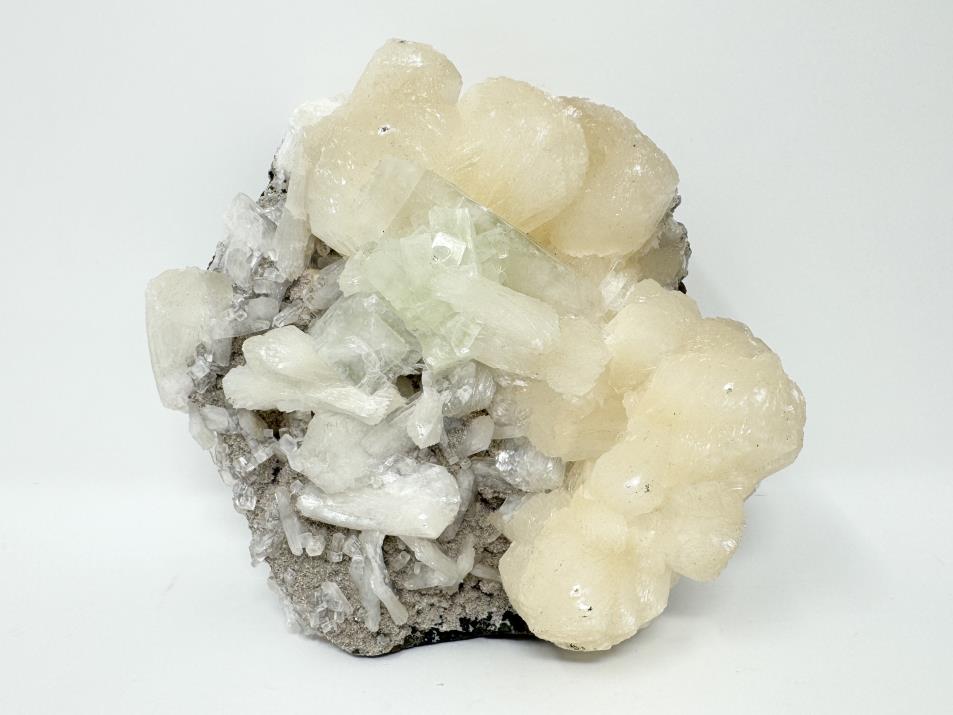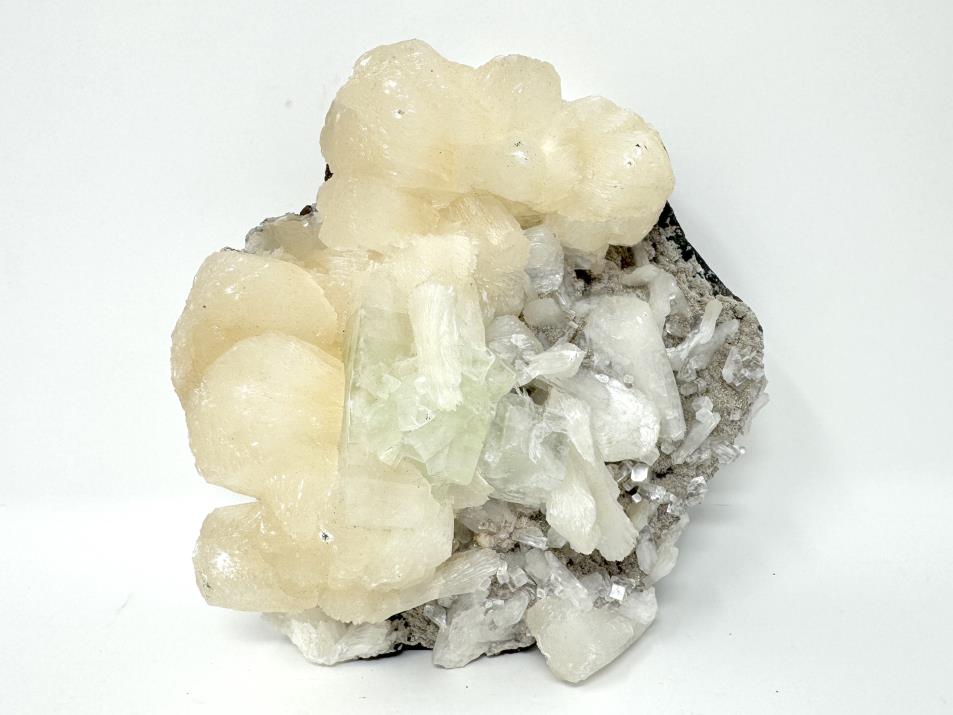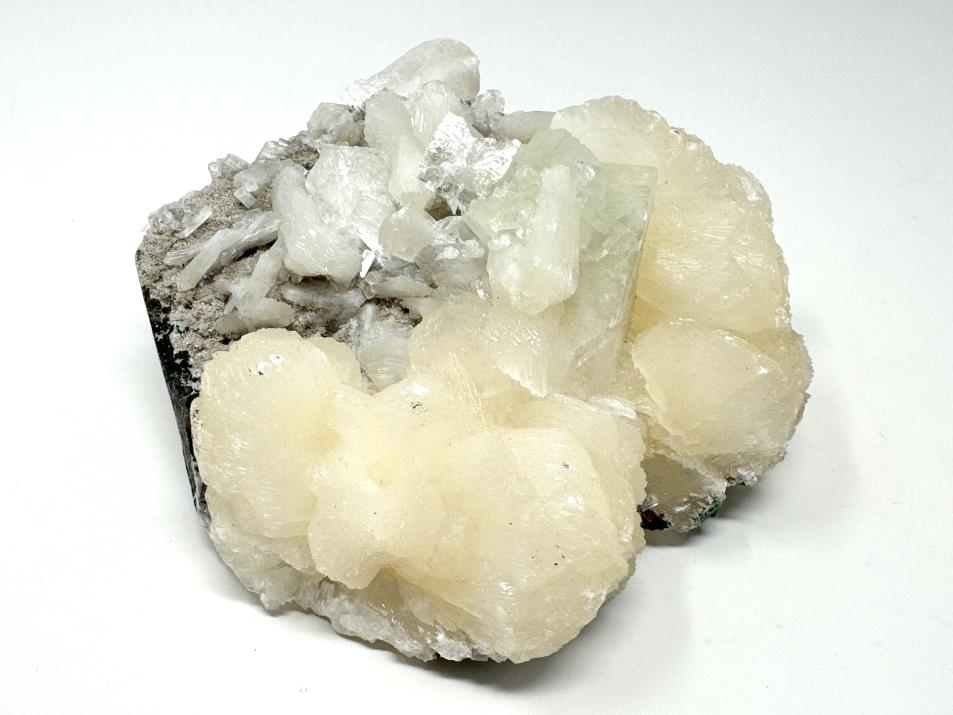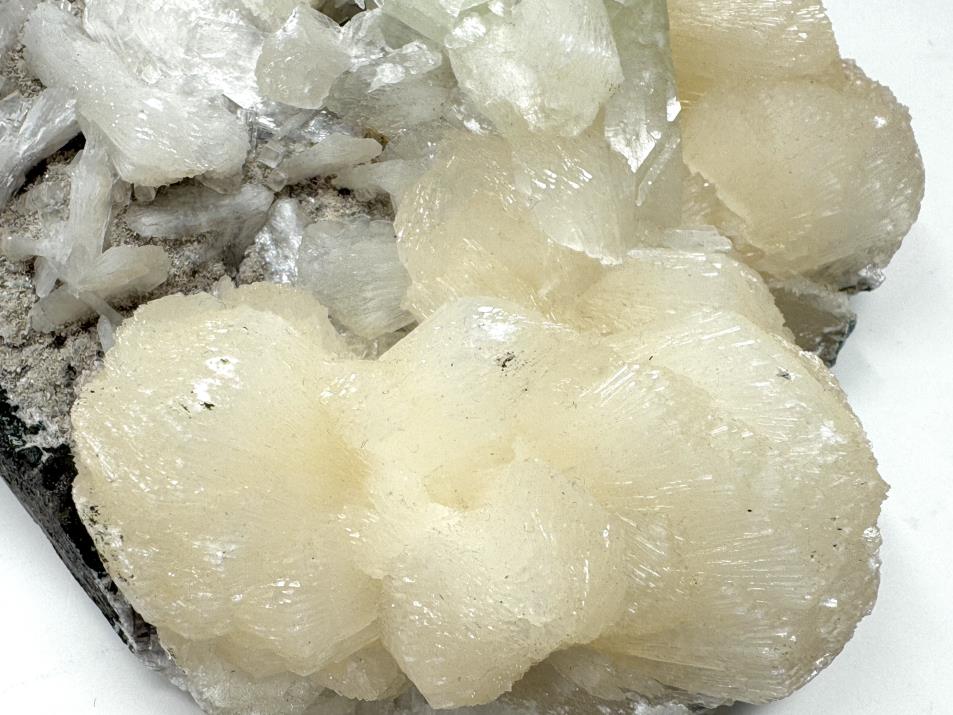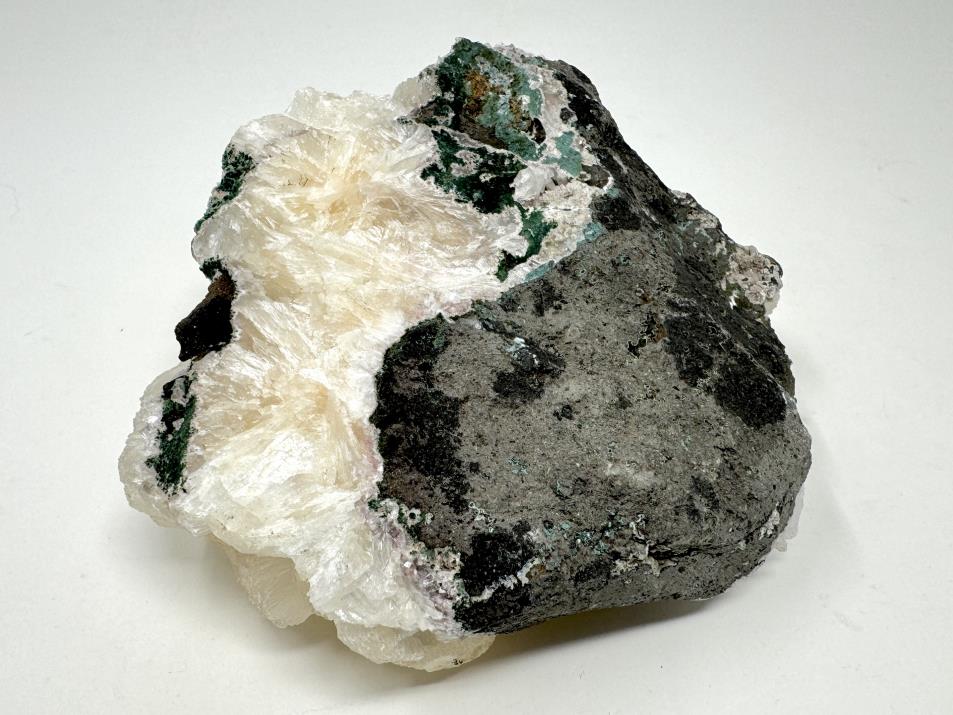Madagascan Direct
Large Natural Zeolite Crystal 15.4cm
Large Natural Zeolite Crystal 15.4cm
Reference Number: 18647
Dimensions: 15.4cm long, 14.9cm wide, 6.5cm deep
Couldn't load pickup availability
Large Natural Zeolite Crystals For Sale: Real Zeolites
This gorgeous Large Natural Zeolite Crystal measures 15.4cm long and displays a stunning cluster of natural crystals which showcases a diverse range of crystal colours, shapes, and sizes.
This unique Natural Zeolite Crystal displays beautiful cream-coloured, white, clear, and peach-coloured crystals.
A Raw Zeolite Crystal is a stunning example of the beauty of natural rough crystals.
Where Do Zeolite Crystals Come From?
Natural Zeolites can be found in countries around the world which have the basalt volcanic environments necessary for Zeolite crystal growth, including in Iceland and the USA.
Our Natural Zeolite Crystals, including this piece, are crystals from India, a country renowned for its high-quality Natural Zeolite Minerals.
More specifically, this Natural Zeolite Crystal was found in Pune, India (Poona, India), a location famous for its rare high-grade Zeolite specimens.
How Do Zeolite Crystals Form?
In nature, Zeolites form in basalt volcanic environments in cavities (also known as 'vesicles' or 'geodes') in volcanic rock.
Ash and rock released by volcanic eruptions, over millions of years, react chemically with alkaline water from oceans, lakes, and other water sources to create Zeolite Crystals.
What Are Zeolites Made Of?
Zeolite is a name for a group of aluminosilicate, tectosilicate minerals that contain alkali.
Zeolites are microporous minerals made of up of Aluminium and Silica molecules in a tectosilicate crystal structure that forms in an intricate, interconnected network-like crystal framework.
Zeolite Purity And Zeolite Mineral Inclusions
Natural Zeolites are rarely pure owing to their highly porous crystal structure, which enables the absorption of other minerals and metals into the Zeolite Crystal Structure.
Natural Zeolite Crystals can include other types of Zeolites, various other mineral inclusions, and a range of different metals; the varying inclusions and impurities within the Zeolite Crystal Structure changes the colouring and appearance of the Zeolite Crystal.
Zeolite Crystals also commonly grow alongside other crystals and minerals such as Quartz/ Chalcedony, Calcite, and Apophyllite, creating unique and unusual mineral specimens.
What Do Zeolites Look Like?
Zeolite Crystals range in colour from colourless to white, brown, pink, peach, orange, red, and green, among other colours.
Zeolite crystals frequently show a beautifully shimmering pearly lustre/ vitreous lustre: in fact, the Zeolite variety Stilbite was named using the Greek word for 'shining'/ 'glittering' in honour of this property.
Types Of Zeolites
There are approximately 45 types of Natural Zeolite Minerals, and over 100 synthetic Zeolites.
Popular Zeolite Crystal Types include Stilbite, Natrolite, Chabazite, and Heulandite, among many others.
Although Zeolite Crystals are very similar to Apophyllite Crystals, these two mineral varieties are not the same.
Zeolite Crystal Habits
The external shapes, or crystal habits, of Zeolite Crystals varies widely between the different Zeolite Crystal Types.
Some types of Zeolite, such as Natrolite, display needle-like crystals (this is known as an acicular crystal habit), or even a filiform/ capillary crystal habit (a very thin, hair-like structure).
Other Zeolite crystal habits include the characteristic tabular, flat crystals of Stilbite, which often forms in the unique wheat sheaf crystal habit.
Heulandite also displays tabular crystals, however these crystals appear in a unique coffin-shaped habit.
Chabazite is characterised by rhombohedral crystals, however the angle of the crystals means that the crystal shape often looks like a cubic crystal habit.
Zeolite Crystal Structures
Zeolites are microporous minerals made of up of Aluminium and Silica molecules in a tectosilicate crystal structure (also known as a framework silicate crystal structure).
In the Zeolite crystal structure, there are open cavities between these Aluminium and Silica molecules, and these open spaces, often containing water molecules, serve as cages and channels for molecular exchange.
Zeolites: Molecular Sieves And Molecular Filters
The unique microporous crystal structure of a Zeolite Crystal means that Zeolites can be considered a type of molecular sieve or molecular filter.
Zeolite Crystals can sieve and filter out smaller molecules as gas and liquid molecules move in and out of them: this makes Zeolites very useful for various purposes in industry such as water purification and waste decontamination.
What Is The Difference Between Apophyllite Crystals And Zeolite Crystals?
Apophyllite and Zeolites are very similar minerals, and Zeolite Crystals commonly grow alongside Apophyllite Crystals in the same volcanic environments, often together in the same specimen alongside other minerals such as Quartz and Calcite.
However, there are slight structural differences between the crystal structures of Zeolite Minerals and Apophyllite Minerals.
Whilst Zeolite Crystals have a network-like tectosilicate crystal structure, Apophyllite Crystals have a layered, sheet-like phyllosilicate crystal structure of alternating silicate layers.
Zeolites History
Zeolites were used in ancient civilisations such as Ancient Greece, Ancient Rome, and by the Maya, for various purposes; most notably, water purification in aqueducts.
Zeolite Minerals were re-discovered and officially classified as a mineral group and named by Swedish mineralogist Cronstedst in 1756.
The mineral name 'Zeolite' comes from the Greek words for 'boiling' and 'stone', owing to the fact that when Zeolites are heated enough to boil, they emit steam due to their high water content.
Zeolites Crystal Meaning And Crystal Healing Properties
Zeolite Crystals are powerful Crystal Healing Stones, commonly used in Reiki Healing and by other Crystal Healers, often in combination with Apophyllite Crystals.
Zeolites: Cleansing Crystals For Detoxification And Purification
Spiritually, the crystal meaning of Zeolites is that of detoxification, purification, and the absorption of negative energy.
Consequently, Zeolite Crystals are used as healing crystals to cleanse, detoxify, and purify one's mind, body, and spirit.
This means that Zeolites are useful Healing Crystals for Stress and Anxiety, and for anyone who is experiencing a build-up of difficult emotions, as Zeolite Crystals can help clear blockages and absorb negative energy.
Zeolite Crystals can enable a clear mind, helping with concentration and attention problems that can occur due to a busy, foggy mind.
Zeolites: Healing Crystals For Recovery, Refreshment, And Rejuvenation
Zeolites are said to exude a soothing, peaceful energy due to their strong water element energy, however their volcanic origins means that Zeolite Crystals are believed to also contain contrasting fire element energy, which can provide one with boosts of joy, passion, and motivation when using a Zeolite Crystal as a Crystal Healing Stone.
Zeolite Chakras
Zeolite Crystals, due to their diverse, varying natures, are associated with all chakras, but especially the Crown Chakra, and to a slightly lesser extent, the Third Eye Chakra (the other higher chakra).
Zeolites are Chakra Balancing Crystals and are great crystals for chakra alignment and energy attunement.
Zeolite: Crown Chakra Stone
When meditated with upon the Crown Chakra, a Zeolite Crystal is said to help attune and balance your energies, making it perfect for use in purification, detoxification, and chakra balancing work.
Zeolite Crystals are highly cleansing crystals that can soothe and clear negative energies when used as Crown Chakra Stones.
A Zeolite Crystal can be used as a Crown Chakra Crystal to help clear energy blockages, mental fog, and emotional overload, ensuring clarity of mind.
A Crown Chakra Stone such as a Zeolite Crystal can help people who feel unbalanced and who are in need of gentle, clarifying, harmonising energy.
How Hard Are Zeolites?
Zeolites measure between 3 and 5 on the Mohs Scale of Mineral Hardness, which means that Zeolites tend to be delicate, soft minerals, and great care should be taken not to damage their surfaces, especially during handling and storage of the crystals.
The hardness of a Zeolite varies depending on the specific type of Zeolite, with Scolecite and Natrolite being particularly soft and fragile due to their needle-like crystals.
Stilbite measures 3.5 to 4 on the Mohs Scale of Mineral Hardness.
Zeolite Crystal Collections
This stunning Large Natural Zeolite Crystal would be an excellent addition to any Crystal Collection, and would make a fantastic crystal gift for the mineral collector or crystal collector in your life.
Zeolite Crystals such as this gorgeous piece are incredibly aesthetically pleasing, and mesmerise with their kaleidoscope of diverse crystal colours, shapes, and patterns.
Raw Natural Crystals are wonderful as Crystal Display Pieces and make for unique home decor/ furnishings.
Zeolite Crystals, in all their wonderful diversity, are great minerals to collect a variety of specimens of, and make brilliant companion pieces to Apophyllite Crystals.
Buy Zeolite Crystals Online at Madagascan Direct.
Product Reference Number: 18647
Share
